
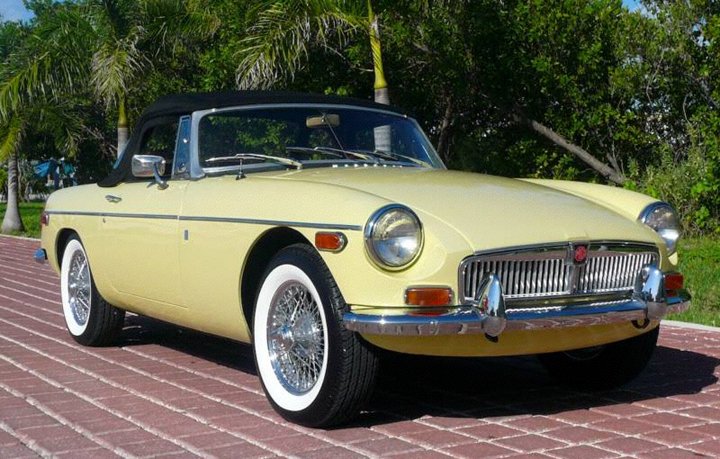
Fifty Years of the MGB 1962-2012
By Geoff Wheatley
In the early spring of 1962 the 100,000 MGA rolled off the factory
floor in Abingdon, England, certainly one of the most successful MG‘s
ever produced. Unike the previous TC and TD that had a four year
production run, the MGA lasted seven. The motoring journalists of the
day asked “What could MG do to beat this record and produce an equally
attractive sports car? They did not have to wait long!
In June that same year the new MGB was presented to the public and the
media. Both went quite ecstatic, the reviews in the national press
said virtually everything positive about this car; in fact it would be
hard to find a negative review. With a body style that was modern,
with classic overtones, and a revamped engine that had been increased
to almost 1800 cc, the equivalent to the average British family
vehicle with a third of the weight.
I was told by the designer of the new MGB that they had intended to
make it larger than the MGA but the bean counters got into the picture
and eventually reduced the wheel base by three inches and the length
by five. This reduced the production costs as they did not have to
redesign new jigs and could simply reuse the MGA production tools.
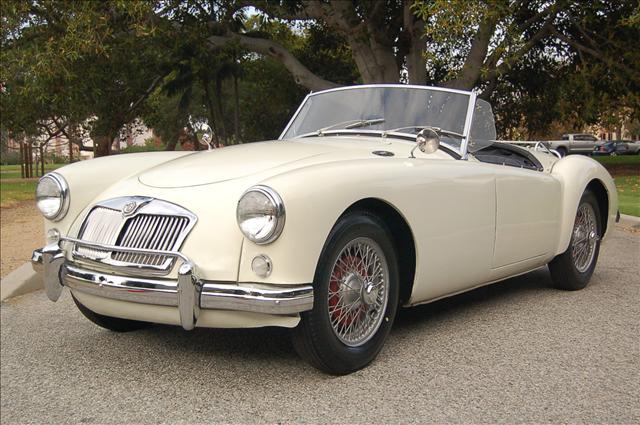
The new MGB still retained the same MGA steering, suspension and
drivetrain, with a few upgrades of course. The price of the early
MGB off the show room floor was just over $1500 based on the exchange
rate of the day. There were plenty of interesting sporting cars
available in those days including a few from Triumph and the recently
introduced BMC Mini Cooper S. The MGB was a few bucks cheaper and
faster than the Sunbeam Alpine, another competitor. Obviously it was
not in competition with the likes of the Healey 3000 or the Lotus Élan
at close to $2,000 but the MGB, within its class provided real value
for the money and it looked good, drove well and was certainly a
winner. Apart from performance it also had a decent amount of leg and
luggage room something unique in the British Sports car of the day.
Most of the time the owner and the passenger had to share the limited
cargo area with a spare wheel and a set of tools but the MGB did allow
space for a travel case and a couple of soft bags although a outside
luggage rack was offered as an extra for those who needed more space.
1964 was a record year for Abingdon the MGB had certainly found its
place in the sports car world but as to be expected after the rush to
be a new owner the following year saw a decline in sales, nothing
serious, but the dealers were starting to wonder it the new MG was
still a winner. All too often new models excite the public for a year
or so then simply become just another car!
In October 1965 the new MGB GT was launched, the car that had been
under wraps for over three years. Apart from anything else the new GT
enlarged the potential market for MG and attracted buyers who would
never considered buying a “Sporty Rag Top” The Motor Media gave the
car thumbs up suggesting that this would be the ideal second car for
the middle class family. In reality this proved to be the case, the
design and convenience of the hatch back style appealed to women but
that’s not to say that men were not attracted to the car especially
when it started to win rally events.
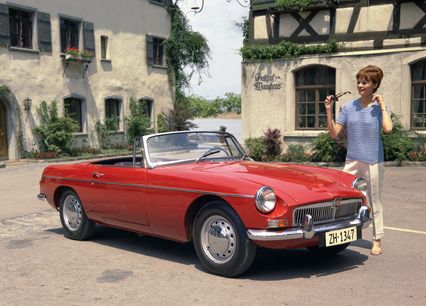
As one writer commented...”At last a comfortable sports car that I
will be able to enjoy in my old age.” Performance was not that bad
considering the extra weight that the car was carrying, (in excess of
200 pounds); it could almost reach the top speed of the MGB it just
took a little longer!
In error the marketing department of BMC Sales promoted the car as a
Two+Two which it never was. Even by the greatest stretch of the
imagination no one could suggest that four adults could ever travel in
the GT unless two sat on a roof rack! At best a small child or the
family dog would be the limit of the rear seat, if that’s the right
word for the area behind the driver and passenger. Sure you could fold
this small seat and turn the rear into a decent size shopping
container but that was about the limit of its usable capacity.
The MGB GT certainly had good looks in company with its older brother,
the roadster. Another attraction promoted by the media was that MG had
managed to offer this car at virtually the same price as the MGB. In
reality this was stretching the truth as they were referring to the
basic price, if you wanted a heater it was extra, seat belts which
were an option also cost a few extra dollars. A radio was the same,
while the popular overdrive that gave the car that extra fifth gear
that the MGB certainly needed cost around $180.
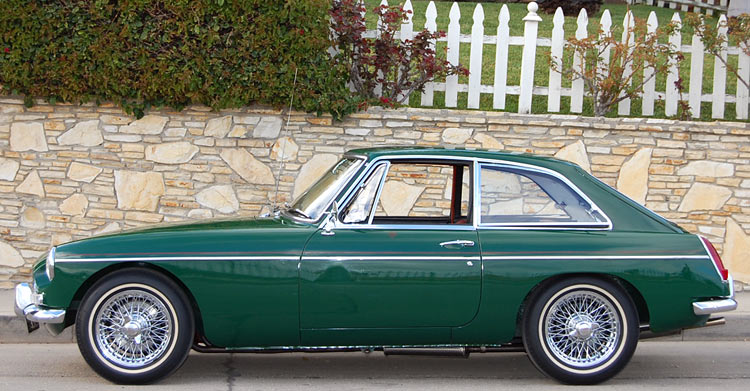
As indicated the performance for the GT was acceptable considering the
extra weight, around 100 MPH just short by five miles on the MGB. How
many owners ever reached these figures is questionable, I have owned
both and still have a MGB but pushing it on a calm day I may get
ninety, furthermore it’s not comfortable even in a GT.
The idea of a MG Sports Coup was not new the idea was tried a few
years earlier with the MGA Coup, a modest success but the car needed
some form of A/C to make it bearable on a summer’s day, however with a
1600 CC engine that had been around for some time this refinement was
not feasible. The GT was a good candidate for such equipment with its
larger engine so many this side of the water did have A/C fitted by
local service shops!
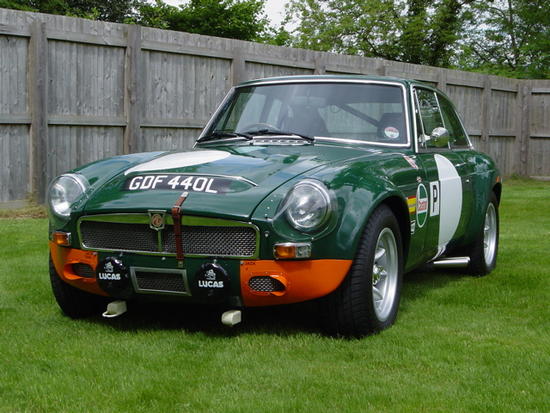
In total 125,000 MGB GT vehicles were produced which may sound
impressive but compared with the MGB at over half a million from 1962
through to 1980, (when the Abingdon factory closed its doors for the
last time), there is no real comparison.
In 1967 BMC and Jaguar joined forces to create British Motor Holdings
with the MG Company becoming part of this arrangement. The Austin
Healey 3000 was being phased out, with a suggestion that a new Healey
would be designed at some future date, so a new powerful sports car
was needed to take its place if only in the short term. Why not take
the three liter six cylinder Healey engine and fit it into a MGB to
fill the expected gap?
The MGC Brings More Power To The People
There is no evidence that much market research was carried out to test
this proposal, some people in MG had the idea and it developed a life
of its own! (As is often the case!) The end result was the
introduction of the MGC Roadster. The first MG to have a six cylinder
engine since the prewar days, its capacity 2912 cc, disc brakes front
but the standard drum on the rear. Top speed 120 mph or close, make
that very close as at least two of the display cars touched 124 mph on
a test track. A GT version was also offered for those who wanted a
little more comfort, in total 4,457 were sold. The roadster achieved a
few more at 4,542 during their short run of only two years from 1967
to 1969. There was nothing wrong with the car apart from early
handling problems due to the extra weight of the engine.
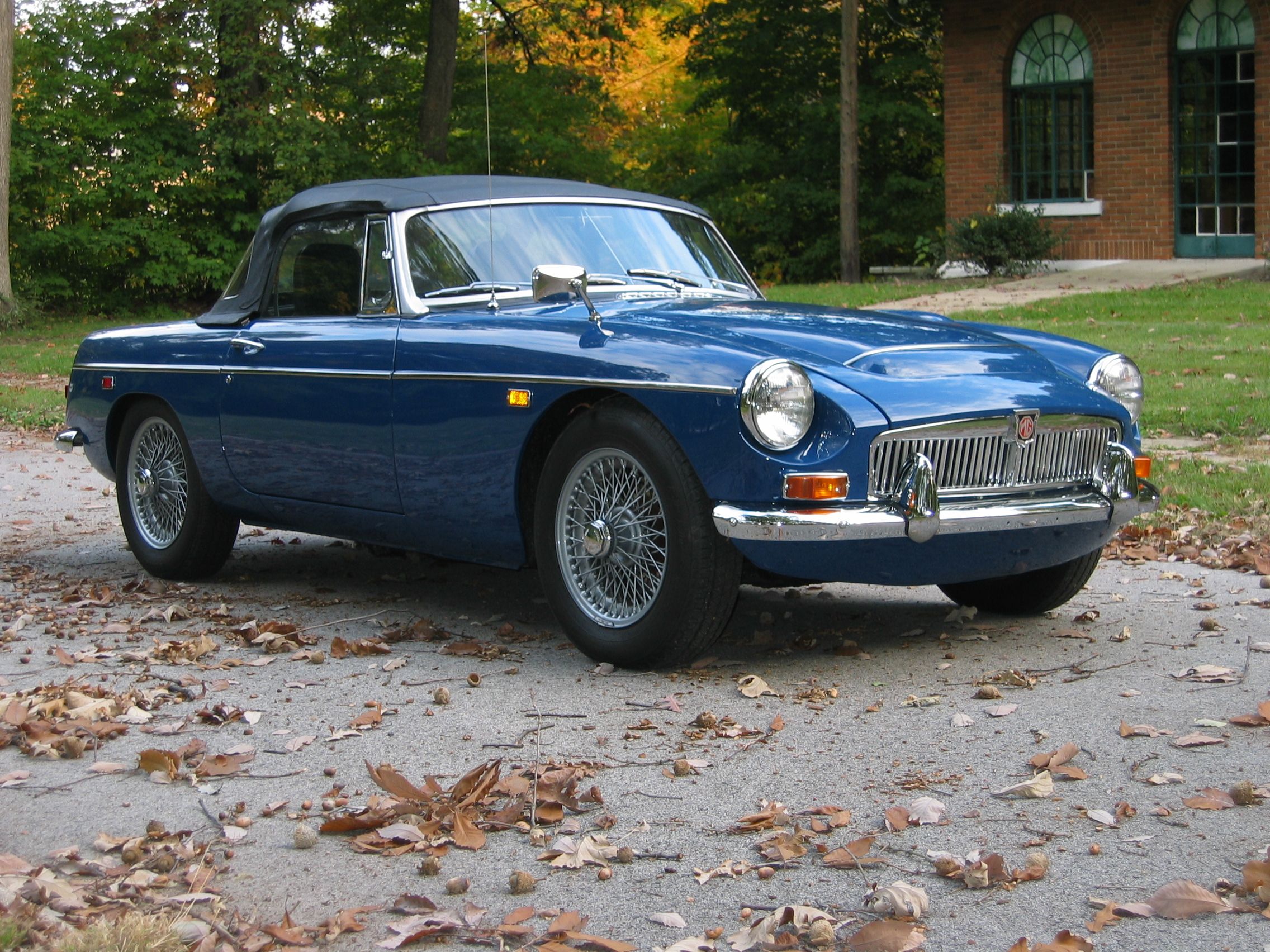
Now add the timing of its launch and the fact that if you were lucky
you might see around 16/18 MPG. Insurance companies were not that keen
to cover this new, fast and expensive vehicle and the world price of
oil was increasing due to problems in the Middle East. This came to a
head in 1973 when Israel went to war with the Arabs and fuel became
not only expensive but hard to find!
That same year British Leyland had taken over Rover and MG as well as
the Triumph Motor Company through a government financial incentive.
Leyland were a successful truck building company that had been around
since the 1920’s. Their stock in trade was making reliable commercial
trucks that were sold all over the world. Their knowledge of the
private motor car market was, at best, limited.
The attraction of taking control of the Rover Motor Company had much
to do with this arrangement. Rover was solid, prestigious and serious
part of British Motor History. Adding MG to the arrangement was simply
a side benefit, like getting the garden shed when you buy the house!
How did all this come about and why was Rover etc., on the market?
Since the 1950’s various British governments had subsidized the motor
industry. It started in 1951 when the British Motor Corporation was
formed, a merger between the two largest manufacturers in the country,
Austin and Morris. The idea was that if you welded these two companies
together with some financial input from the tax payer their capacity
to export and expand would improve and grow.
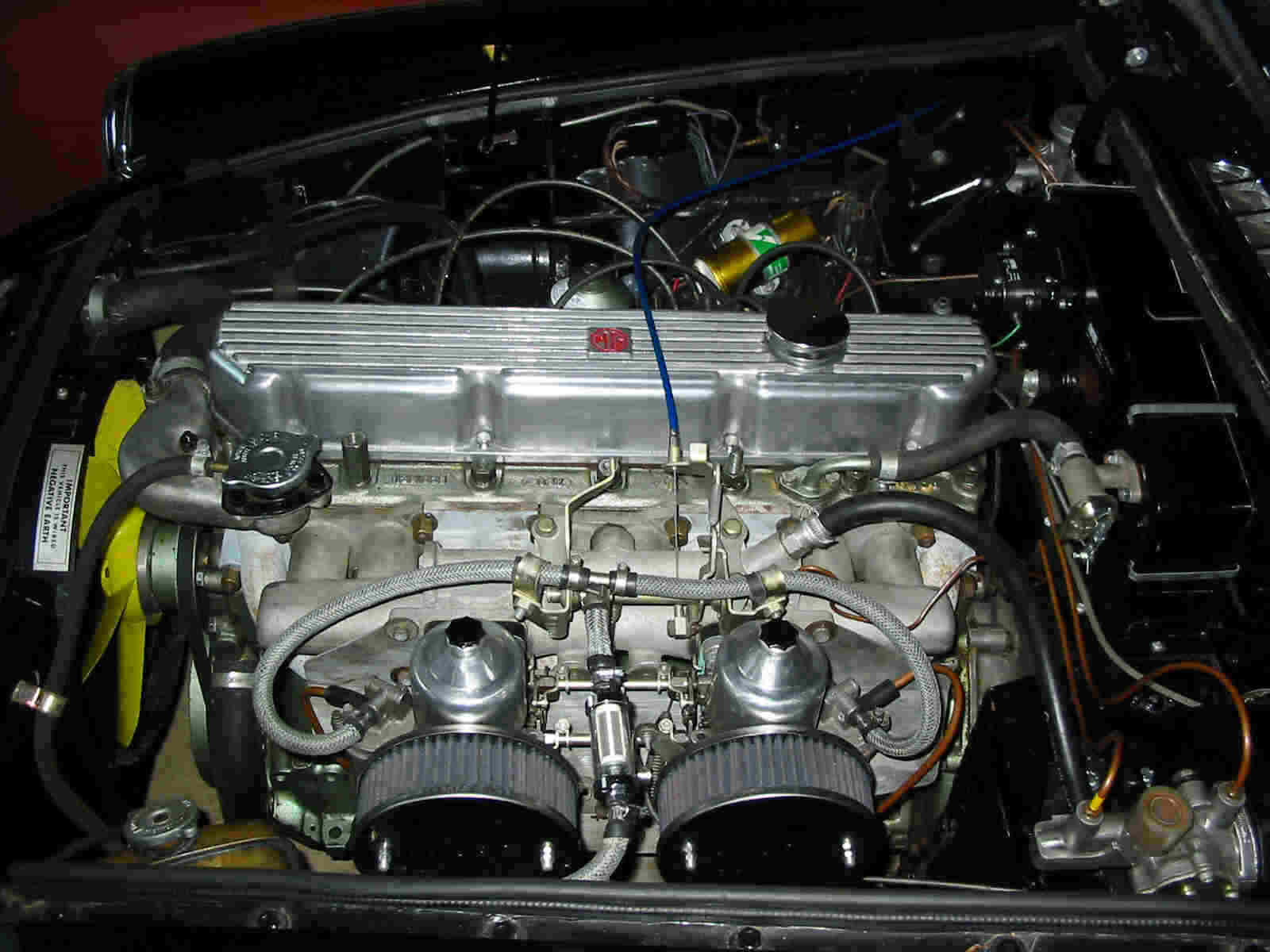
There was nothing new in this idea. It had been tried before both in
Europe and North America but in these situations it was by mutual
agreement not by some government directive sweetened with a capital
investment of tax payer’s money! This type of support had continued
in each successive administration with the government acquiring an
increasing interest in the industry investing billions of tax dollars
over the years with little to show for it!
The answer in the early 70’s was to sell off whatever they could or
find a group that would take over the activity for a consideration.
That group turned out to be British Leyland who now had Triumph. Rover
including Morris, Austin and MG, the latter being the smallest of the
manufacturers. As Austin and Morris had been strong competitors over
the years the same situation applied to Triumph and MG so neither were
very happy about the new arrangement with Leyland now holding the
purse strings.
The MGBGT V8
MG needed something to show that it was not totally dependent on a car
that by now was well over ten years old despite the fact that the MGB
was still selling well in America the principle export market. In
August 1973 the first eight cylinders MGB rolled off the production
line ready for the Motor Show scheduled a few weeks later. The engine
came from Rover in fact it was the power unit for the popular 3,5
Rover that had strong connections to the USA!
A special body had to be designed to take both the weight and stress
of such a machine however you would have a hard job from twenty feet
to know the difference between a standard MGB GT and this vehicle.
Top speed was just five miles higher than the six cylinder used in the
ill fated MGC. Even today it’s not clear why this vehicle was ever
produced or what it was intended to replace, none were exported to the
US, which should tell us something! It has been suggested that it
could have been designed to replace the E Type Jaguar that was
starting to show it’s age especially with US dealers, but I find this
hard to accept as the E Type was, and still is, a beautiful example of
engineering and design.
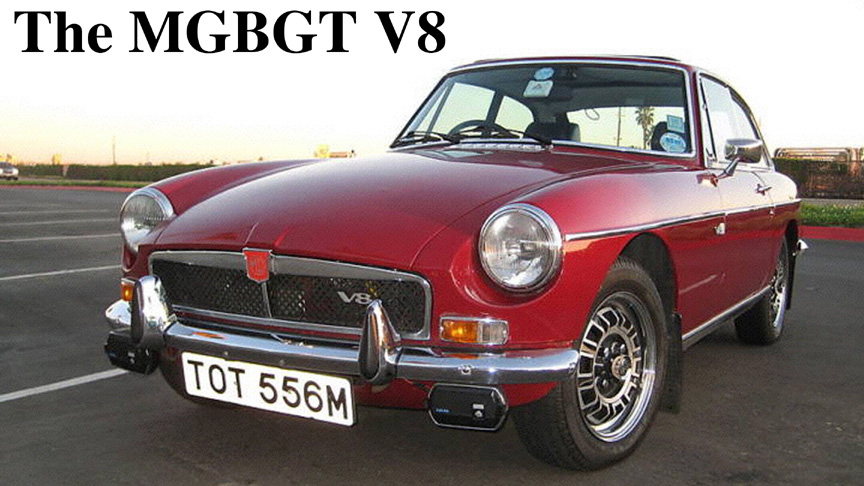
MG continued to use the old brake design, discs in the front, drums in
the rear for a car that MG claimed was in the 125/30 mph brigade.
Between 1973 and 1976 the price increased from $3,000 to $6,000. Which
I suggest would have killed any assumed market as illustrated by the
final production figures of 2,591 produced between 1973 to 1976...
By this time, fifteen years since the launch of the MGB, the overseas
demand was drying up and to add to the problems new safety
requirements based on the actions of an American Lawyer called Ralph
Nader ten years earlier were now being implemented on all imported
cars that were offered for sale in the USA.
For MG and all other imports the new impact studies required that
cars must be able to withstand a front or rear impact at a minimum of
five miles an hour. To resolve this requirement MG fitted the MGB and
GT with Steel Armatures covered with black polyurethane molded bumpers
that looked like rubber boots on the back and front. Compared with the
traditional chrome that enhanced any car, these were at best ugly.
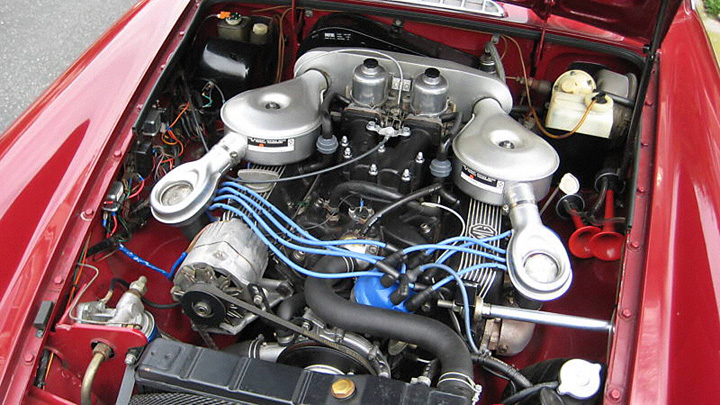
In order to meet emission requirements the sporty twin carburetors
were replaced with a single unit that also reduced the performance.
The car was also heightened by one and a half inches causing the MG to
roll on corners...In short these requirements reduced the car to a
Sunday afternoon driver rather than a sports car.
By 1979 B/L was claiming that the MGB was losing about $1,000 on every
car exported. The reason was simple, shipping costs had increased due
to the high cost of oil, the exchange value of the pound had also
increased while the dollar had declined as part of a US export policy
so the price of a 1979 MGB was now almost $9.000… ( By the time the
owner put the car on the road with the dealer prep costs, delivery,
tags etc., it was close to $9,500.) Virtually the same car as the 1963
MGB with a few modifications that was now eighteen years old.
In one last desperate attempt to keep its US market in the spring of
79 the” MGB American Limited Edition”, was launched which by any
measure was still the production MGB without the chrome. It was not a
success in fact many never made it to the American dealers, they
simply sat in their transport crates on the docks. What happened
after that is not clear but my guess is that you could pick up a MGB
for a very reasonable price within a hundred miles of dock land!
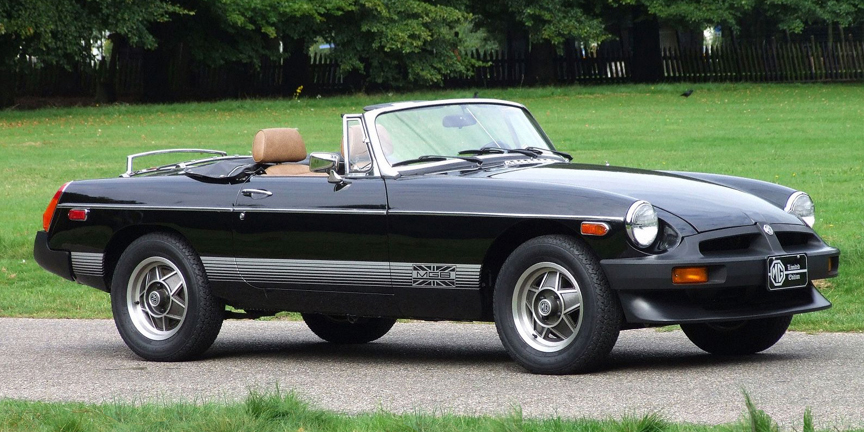
So after eighteen years and over half a million cars, (513,276 to be
exact) the MGB and the company ceased to exist. It closed its Abingdon
doors in 1980 and a few years later the factory was demolished. When
BMW purchased Rover the deal included MG and for a few years the breed
was revamped with a mid engine design and sold in the UK but the
demand had disappeared as a new generation of car drivers entered the
market. Today unless you are an enthusiast the term MG means very
little to the majority of people. In fact I was once asked if the car
was made by GM and they got the name the wrong way round!
© 2012 Geoff Wheatley
Edited by Rick Feibusch. Images Submitted by Rick Feibusch 2012
|









